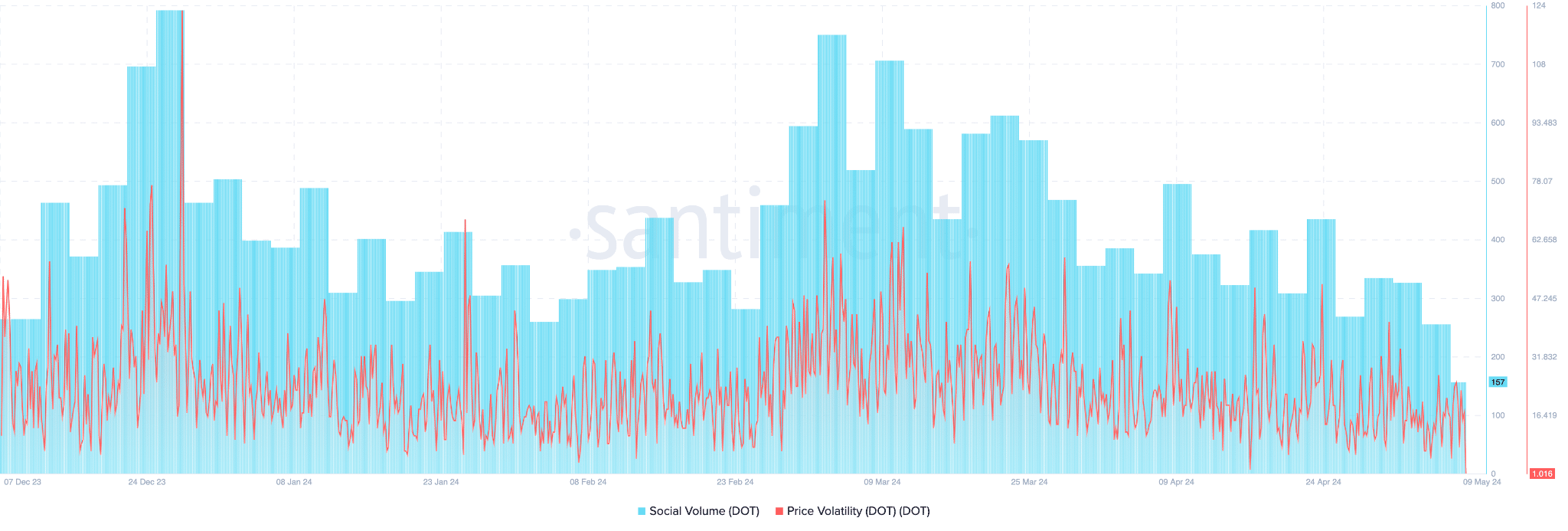- DOT continued to fall below the 200 level.
- Despite the ‘extreme fear’ sentiment in the market, the 138.77% surge in trading volume indicates growing interest from traders.
Polkadot (DOT) has established itself as a terrible performer this year, even amid rising markets and ETF hype.
The world’s 18th largest cryptocurrency has been in steady decline and shows few signs of revival. But what if there was light at the end of the tunnel?
From a technical perspective, the 50-day moving average (blue line) and the 200-day moving average (red line) represent crossover periods.

Source: TradingView
However, despite this crossover, the price was unable to maintain its bullish momentum and continued to trend below the 200 level for an extended period of time, indicating a bearish trend.
The relative strength index (RSI) has entered oversold territory at around 19 at press time.
This suggests that DOT is heavily sold and potentially oversold, which may lead to a price correction or reversal as buyers pull back to see value at lower price levels.


Source: Santiment
DOT’s social volume has been steadily declining over the past two months along with continued price declines.
But for now, DOT’s derivatives data looks interesting. This suggests that there may be some silver lining to the bearish momentum.


Source: Coinglass
First, trading volume increased dramatically, increasing 138.77% to $506.95 million. This suggests a surge in trader interest or speculative activity. And liquidity appears to have slowed down last week.
Bearish sentiment still prevails among traders.
‘rekt’ data shows that recent market conditions are unfavorable for many traders, especially those holding long positions. This is because the liquidation volume of long positions is disproportionately large compared to short positions.


Source: CFGI
Read Polkadot (DOT) Price Prediction for 2024-25
The Polkadot Fear and Greed Index was 24%, indicating ‘extreme fear’ among investors.
This sentiment is driven by a combination of factors including negative perceptions of price stability and high volatility, suggesting the market is wary of further declines and the uncertainty of price movements.

